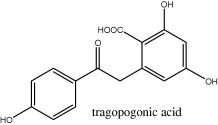Tragopogon porrifolius L. - Asteraceae - (common) salsify, oyster plant, vegetable oyster, Haferwurzel, Haferwurz
Annual or biennial herb, up to 120cm tall, native to Europe, West Asia and North africa, naturalized elsewhere; basal and lower cauline leaves lanceolate or linear; flowers solitary to few, violet, 4-5cm across.
http://www.efloras.org/florataxon.aspx?flora_id=2&taxon_id=200024596
„The plant is mainly used as a root vegetable, but the leaves can be prepared as a salad or spinach. The sweet-tasting, latex-containing root whose taste is reminiscent of oysters is very nutritious, which also implies an Alemannic saying: Habermark macht d' Bube stark.“
http://de.wikipedia.org/wiki/Haferwurzel
„The root, and sometimes the young shoots, of T. porrifolius are used as a vegetable, and historically the plant was cultivated for that purpose; it is mentioned by classical authors such as Pliny the Elder… However in modern times it has tended to be replaced by Spanish salsify (Scorzonera hispanica) as a cultivated crop… The plant has also been used in herbalism, also since classical times (it is mentioned by Dioscorides), and is claimed to have beneficial effects on the liver and gall bladder. The root is regarded as a diuretic.“
http://en.wikipedia.org/wiki/Tragopogon_porrifolius
The root contains bibenzyls (5,4′-dihydroxy-3-α-l-rhamnopyranosyl-(1→3)-β-d-xylopyranosyloxybibenzyl, 2-carboxyl-3,4′-dihydroxy-5-β-d-xylopyranosyloxybibenzyl, tragopogonic acid (2′carboxyl-3′,5′,4″-trihydroxyphenylethanone) and dihydroisocoumarins (including 6-O-methylscorzocreticoside I).
[Bibenzyls and dihydroisocoumarins from white salsify (Tragopogon porrifolius subsp. porrifolius)., Zidorn, C., Lohwasser, U., Pschorr, S., Salvenmoser, D., Ongania, K.H., Ellmerer, E.P., Stuppner, H., Phytochemistry, Vol.66(14), 2005, 1691-1697]
„The nutritional value of this plant is due to the presence of monounsaturated and essential fatty acids, vitamins, polyphenols, and fructo-oligosaccharides with probiotic effects on the intestinal microflora (Formisano et al., 2010; Konopin ́ski, 2009)…
Fifty-six compounds were determined by SPME while thirty-nine were determined by SDE [from fresh root]. Compounds identified belong to different chemical families as terpenes, alcohols, hydrocarbons, aldehydes, acids and esters… One of the most abundant chemical families identified in salsify were the aliphatic hydrocarbons… The main fatty acids extracted in white salsify were hexadecanoic acid by SDE while SPME extracted fatty acids of low molecular weight, such as decanoic acid, nonanoic acid, octanoic acid and hexanoic acid… The main components of the alcohols were hexanol, (Z)-3-hexenol, (E)-2-hexenol, 2-ethylhexanol, 1-octen-3-ol, 1-octanol and phenylethanol, which are produced by the enzymatic reactions. In fact, C 6 aldehydes and alcohols come from lipid precursors, thereby providing vegetal or herbaceous aroma… The main aldehydes identified, (E)-2-hexenal, benzaldehyde and phenylacetaldehyde, were detected by applying only SPME… The volatile profile of salsify comprises a large proportion of esters of aliphatic acids… Methyl hexadecanoate, ethyl hexadecanoate, methyl 9,12,octadecadienoate and methyl 9,12,15-octadecatrienoate were also found in high amounts… SDE identified a number of Maillard reaction products, such as furfural and 5-hydroxymethylfurfural. The latter was not detected by SPME.“
[Characterisation of volatile composition of white salsify (Tragopogon porrifolius L.) by headspace solid-phase microextraction (HS-SPME) and simultaneous distillation–extraction (SDE) coupled to GC–MS., Riu-Aumatell, M., Vargas, L., Vichi, S., Guadayol, J.M., López-Tamames, E., Buxaderas, S., Food Chemistry, Vol.129(2), 2011, 557-564]

Kops et al., J., Flora Batava, vol. 4: t. 264 (1822)
http://www.plantillustrations.org/species.php?id_species=1025372
Tragopogon porrifolius (subsp. porrifolius) / Wien 3. Alpengarten Belvedere © Rolf Marschner (2015)
www.botanische-spaziergaenge.at
